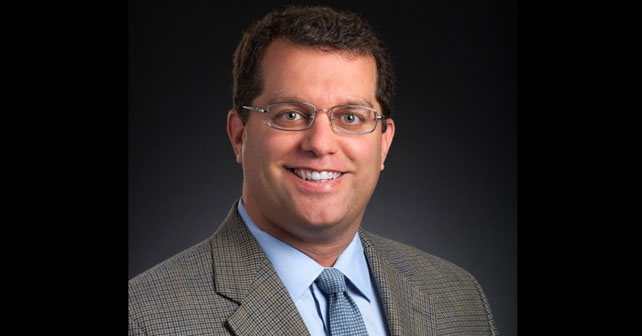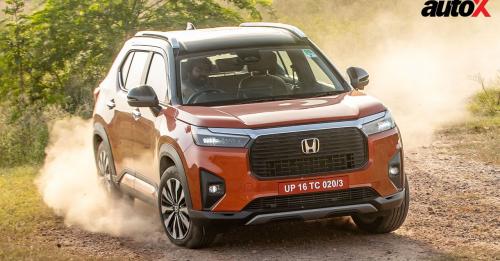Most new engines are fitted with turbos to strike the right balance between power, efficiency and emissions. So, we quiz the experts on their recipe for success.
One of the main factors behind the success of the Honda Amaze has been its locally produced diesel engine, and one of the biggest contributors to that success has been the Honeywell turbocharger found under the bonnet. So, we sent our resident tech-geek, Ishan Raghava, to the top brass at Honeywell Transportation Systems to learn more. Here’s what Terrence Hahn, Global President & CEO, Nitin Kulkarni, VP Global Customer Management, and Milind Godbole, MD India, had to say:
What does Honeywell Turbo Technologies bring to India?
Terrence Hahn: We’ve been able to bring world-class technology and capability in both engineering and manufacturing to India – our Pune facility has the manufacturing capability, and, at our Honeywell Technology location in Bangalore, we’ve got the engineering capability to serve customers in India and around the world. I think the combination of having the capability to meet export and global requirements of the industry, but also having the sensitivity to be able to design for drivability and duty-cycle requirements in India has made us the supplier of choice. One example of this is what we’ve done with Honda on the Amaze.
Nitin Kulkarni: The Honda Amaze launch was a strong message that we sent to the industry – to say that we’re here to provide a local solution, even though Honda is a global company. We interact with them in Japan, but when they were to introduce the Amaze, which was built for Indian conditions, they were looking for local solutions. So, our application engineering team in Pune, and our engineers and technologists out of Bangalore, worked on the solution very closely with Honda’s local team to develop a solution – and now it’s been successfully launched. As I understand it, the Amaze launch for Honda has been very successful indeed. And, of course, their success is our success.
Milind Godbole: We actually worked with Honda right through, with our ‘East for East’ concept, and aimed specifically for drivability in India – this is what we focused on when we started with the design. As you are aware, Honda does a lot of work on development out of Japan, so our application engineering center in Japan and the one in India both worked very closely to make sure that the project went through flawlessly. So, this clearly demonstrates our capability to take our global excellence in technology and not only localize the role, but actually work from the ground-up to serve our customers – especially those who step into showrooms on the promise of drivability and fuel efficiency, which is what the Honda Amaze has been highlighted for. This is just one example, we look forward to up to 9 launches every year with a variety of manufacturers.
Percentage-wise, how much of the development work for the turbocharger of the Amaze was handled by the Indian team? And is it completely indigenized as far as production is concerned, or is it a mix of Indian and imported components/materials?
Milind: It’s very difficult to quantify in terms of percentage, because the development was handled simultaneously by the center in both Japan and Pune – along with help from Honda of course. As for the local and imported content, it’s definitely in favour of local content – and that’s the edge we have. It’s hard to give you an exact number, but local content is much higher amongst the two.
Nitin: From my perspective, what I would say is that – sitting here at HQ in Europe – the India team had full authority and responsibility to work with Honda to develop this application. Any support that was needed from Europe and/or Japan was provided. So, as Milind says, it’s hard to quantify percentage – but the main interface was absolutely in India.
There’s been some work on electric turbos, could that be the next big thing in turbocharger technology?
Terrence: I would say yes, people are looking at e-turbos – and that’s mostly happening in Europe, which is, of course, largely driven by fuel economy and emission standards. But, the conventional turbo as we know it has a lot of space left for improvement. If you look at the variable geometry or variable nozzle turbo – which is being introduced in India by the way – it has already gone through three generations of improvement, and I believe there is at least three more to come. Even the conventional wastegate turbo, which started the revolution, has gone through many generations. So, I think we will continue to offer – if I look at where we’ll be five years from today – a portfolio of turbocharger applications, whether it’s wastegate applications, variable nozzle applications, or even e-turbo applications.
Are your India operations domestic-market focused, or will be a mix of domestic supply and exports?
Terrence: I would say the latter. Obviously we want to focus on India, but we want to do both because we have global customers. These global customers obviously want support in India, but in many cases they want support for export as well, and we’re absolutely ready to do that.
Do you feel there’s a demand for turbos in aftermarket applications in India?
Terrence: There is a demand for an aftermarket space, and our Garrett branded Honeywell offerings for the aftermarket are available globally. We use the manufacturing footprint that we have globally to be able to produce for the aftermarket. So, we are absolutely prepared not just to service the OE’s, but to make sure that consumers have access to highly reliable Honeywell and Garrett certified aftermarket parts and after-service parts – that’s part of our complete commitment to the industry.
What role do you see turbocharges playing in the Indian market going forward?
Terrence: The current penetration of turbos has been very high with diesel engines in India. We’ve met, and hopefully exceeded, the expectations of the industry in being able to bring capability to allow this dieselization to occur. For drivability and affordability, we’ve brought together a common set of attributes – improved fuel efficiency, reduced emissions, and higher torque in a downsized engine. This transition appears to be at the beginning stages of occurring in petrol engines in India as well. And again, the benefit is that we bring local capability in engineering and manufacturing, behind which comes a resume of significant petrol turbocharger successes that Honeywell has globally. Just as we brought that resume of capability to our initial penetration activity to support the industry in diesel, we’re ready to do the same for petrol as well. So, we’re very excited about the direction that it’s going in. When you talk to people inside the showroom – when they’re buying a vehicle – the conversation is about fuel efficiency, a need for emissions reduction, and drivability. What’s fantastic about this is that the same dialogue which is taking place on the showroom floor is also going on at the auto OEM’s – and that dialogue is going on in our technology centers as well. So, it’s pretty exciting as we see what’s flourished with diesel – and we see that happening with petrol as well now.
























Write your Comment